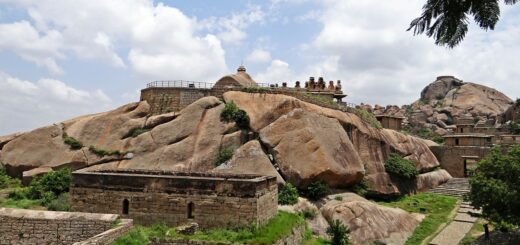The Magic of Train Journeys in Childhood
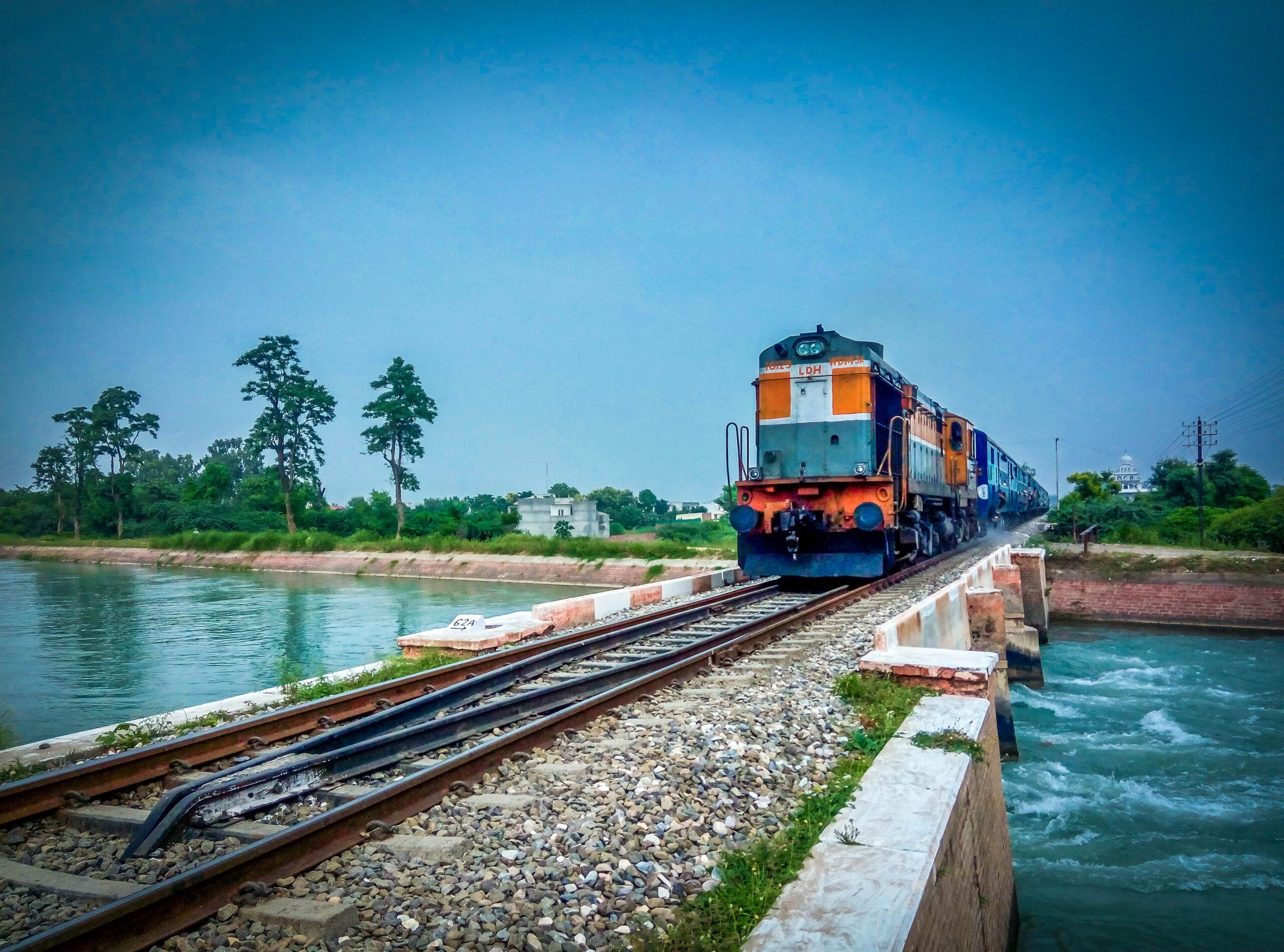
My father and I were running as fast as we could on the platform, trying not to run into the swathes of people running in the opposite direction – not to mention the stray dogs, foraging for scraps and peering at the compartment windows to see if anyone would throw some food their way. We reached the front of the train just in time, and the last tiny puffs of smoke wafted lazily upwards from the engine which was switched off. My excitement was at a peak – the workers were just detaching the engine; then it slowly chugged away, and I waited with bated breath as another engine slowly made its way down the track, and workers attached it to our train. Though I had seen it all in my previous journey, the whole exercise, including running across the platform was all a big adventure, one that I would not want to miss. Now that the engine was detached, I made the run back to the compartment we were in, along with my dad, the adrenalin coursing through me.
I don’t remember exactly how old I was at the time – but definitely less than 10 years old. My mother was from Mumbai, and my father from Calicut. She used to go to Mumbai every year for a month during my summer holidays, to spend time with her parents. There was no Konkan Railway at that time, which meant making the long 40+ hour journey by the Jayanti Janata train, or traveling by bus, which was shorter but uncomfortable.
So, the Jayanti Janata was a train that meandered all the way from the southern tip of India, then entered Kerala, and for some strange reason, went into Tamil Nadu again, and chugged through a good part of Andhra Pradesh, before entering Karnataka, and then Maharashtra. On the way, we passed places with exotic (to my mind) names that had a rhythmic or melodic lilt – Arakkonam, Renigunta, Guntakal, Yerriguntala, Jolarpettai, Nandalur, Katpadi, Kurudwadi… I would often write down the names with awe in a small book, and compare the time we reached each station against the schedule. No, that time we did not have Smartphones to check the live running status; we had printed Train Time Tables that were as thick as school text books. My father always kept a copy of the Southern and South Central Railway time tables with him. Reaching on time was a rare occurrence, and people would be stunned if that happened. Traveling by the Jayanti Janata from Calicut meant being detached (two compartments were especially for passengers of Malabar) and left on a lonely deserted platform at Erode (if I remember correctly) station in Tamil Nadu, for anything from 2 to 4 hours, waiting to be attached to the main train.
Most passengers used to find that a colossal bore, but not me. I used to pack enough Amar Chitra Kathas and Enid Blytons for the journey – and would sometimes pick up a couple of issues more at the Higgin Bothams or A H Wheeler stalls on the station platform after convincing my parents that I ‘had’ to have that new comic. I was a voracious reader, and loved looking out of the window, enjoying the scenery as the train complacently chugged along half of southern India to reach her destination. Traveling by train for long journeys like these, was a grand adventure for me.
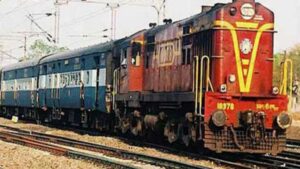
Some of the highlights included:
- Buying rose milk from Jolarpettai station
- Getting down on the platforms with dad and walking about, hovering close to the compartment door.
- Eating curd rice, puri bhaji, idlis and banana chips packed for the journey – oh yes, the ‘train menu’ was pretty much fixed.
- Getting down and running to the front of the train to watch the engine change
- Running to fill the water bottles; there would often be a crowd, and in many places, especially in Andhra, the water would be a dubiously murky shade of beige
- Getting up in the middle of the night, or wee hours of the morning, to see ‘the lights of Khopoli’; this held special excitement for me. Khopoli was at least then, a small town nestled in the valley in the Sahyadri Hills between Pune and Mumbai. As the train strained and huffed and puffed along the mountain track, the lights of the town below could be seen from the window of my seat, and it was a pretty delightful sight.
- Playing ‘spot a —’ game with my sharp-eyed father, and peering outside to see what he was referring to
- Running full speed to the ‘Vegetarian Refreshment Room’ At Solapur, and a couple of other stations I don’t remember; on long journeys, the home cooked food would finish, and for the last one or two meals we had to depend on the canteens run by the railways. In those times, the trains would stop for about 20 to 30 minutes at ‘meal stations’, as railway staff would bring steel ‘thalis’ with food and serve to passengers sitting inside – of course, you had to order your meal well in advance. The plates would be collected and taken away from the train, and only then would the train set off again. My father once saw the staff stacking the plates too close to the washroom, and he never ever ordered those meals again. Run for the canteen it was.
- Waiting for Karjat station to buy vada pav, and chikki and sandwich at Lonavla
- At big turns, standing in the doorway and peeping out to see the train snaking its way
- Putting my face to the grills in the windows to feel the wind
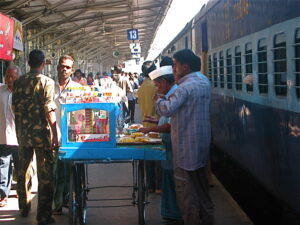
There was no A/C in those days; we had unreserved, second class, and first class. Most people travelled by second class. I always opted to sleep on the topmost bunk, feeling very adventurous, like I had climbed a mountain. Preparing for bedtime was a big ceremony. My mother would take out the ‘bedding bag’, and bring out the sheets, inflatable pillows and blankets, and my dad would wipe the sleeper bunks with newspaper (yup, we carried a bag full of old newspaper for such myriad purposes), and spread the sheets and so on.
It was never difficult to pass the time, even on such a long journey. The adults would strike conversations with fellow passengers, and we kids would start playing, running in the aisles, or play word or board games on the top bunk. Those were the times that we could accept biscuits or fruit from the ‘aunty’ in the neighboring berth without getting paranoid; when any random co-passenger could ask us our names and how old we were without being creepy or inviting cold stares; when everyone would share food, pay for each other’s’ teas and coffees without thinking who is richer or poorer. When everybody was ready to ‘adjust’ – change seats, sleep a little later, or get up a little earlier, and so on – to help co-passengers.
Those were the days that beggars would come, seeking food or alms; some would sing – and claim ‘entertainment’ charges; some others would clean the floor of the train for some money. This was the other side, the sad side of the journey, witnessing the state of poverty that so many people lived in, and what they were prepared to do for money.
We passed through lush green fields, swelling rivers, vast stretches of coconut trees swaying gracefully in the breeze, mountains with gushing waterfalls, bare riverbeds, stretches of dry, arid land with rocks and thorny vegetation, and I drank it all in. I marveled at the changing landscape, the differing languages, the variety in the cuisine, and maintained my excitement of the train journey from start to finish.
We used to have a bit of trouble in a certain area of Andhra – at that time, the Naxal movement was quite strong, and many students had succumbed to it. They would forcefully enter the ‘reserved’ compartments, and sit on our seats (they wouldn’t ask us to get up), and on our top bunks; as we passed that area during the daytime, those would be mostly empty. If any bags or luggage was kept on the top bunk, they would simply throw them down. Nobody dared to say a word to them – they would get down at the next, or the second station after that, and till then, we rode in silence. It seems, once in an altercation, quite a while ago, some of the students had roughed up a passenger badly because he objected to them barging in. Even without social media, the news had spread, and most passengers were terrified of those students. You could hear audible sighs once they got down.
It was not the most comfortable of journeys in those days; often the trains would be delayed, and we had to spend many more hours than we anticipated on the train. Travelling in the summer could be terrible; and many a times the fans would not work properly. An intrepid traveler would volunteer to put a comb through the grill and poke it in a valiant attempt to get it going once more. Finding clean drinking water was a problem in many places; food options were limited; entertainment was limited to reading, playing cards, singing, playing antakshari, and appreciating the scenery outside etc. No Netflix, no downloads, no social media, no wifi.
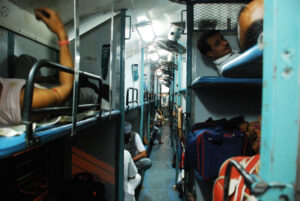
And yet, people were relatively happier; there was a lot of camaraderie, unlike today, when everyone is buried in their Smartphones. The young generation today may never understand how we used to enjoy such journeys, and may be even aghast at how we passed the time.
But I feel sorry for them that they never got to enjoy such simple joys. That they have not seen India like we have. In this age of instant gratification, I wish we could turn the clock back, and set off on a long train journey through the length and breadth of India, and truly experience this wonderful country.
What are your favourite train memories? Do share in comments!

